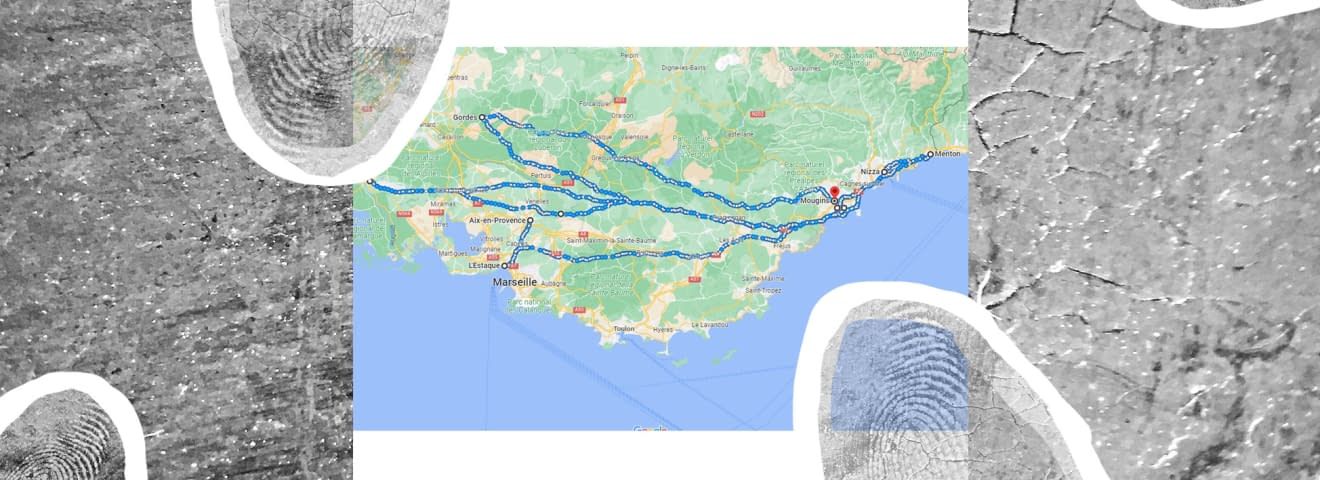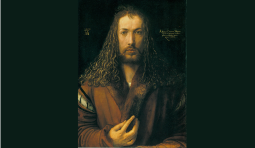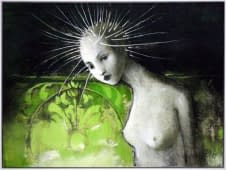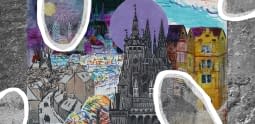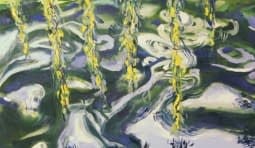Following the traces of #4 Southern France and the Arts
The south of France in summer lies under the glaring sun, brown soil, the wind from the sea, the chirping of the cicadas, the shade of the pine trees and, according to van Gogh, the shapes of the cypresses. Time stands still in the picturesque villages, people drink coffee, interrupt the senior citizens playing boules to have a chat and breathe in the deep calm while the sun gently kisses their faces.

However, there is a lot to discover. Paul Cézanne was born in Aix-en-Provence in 1839 and lived there, occasionally visited by his friend Émile Zola, not far from his most important motif, Mont Sainte-Victoire. L'Estaque, a small village to the west of Marseille, was also captured by him as well as visited by the co-founder of Cubism Georges Braque, probably because he admired Cézanne so much.
One of the most important artists of classical modernism, Henri Matisse, also lived in Menton and Nice in the south of France for many years. His church, the Chapelle du Rosaire, can be admired in Vence. Pierre Bonnard lived with his wife and muse in Le Cannet for a long time. Pierre-Auguste Renoir's country estate "Les Collettes" is located in Cagnes-sur-Mer, surrounded by old olive trees, Important paintings by van Gogh were created in Arles. Picasso bought Mont Saint Victoire, as he told the art dealer Daniel Henry Kahnweiler. Kahnweiler, one of the most important art dealers of the Cubists, who thought Picasso meant a painting by Cézanne, asked which one he meant? Picasso replied: "The real one". He bought the castle of Vauvenargues, which was often quoted by Cézanne and in the middle of which stands the mountain massif he loved so much. The castle is also Picasso's final resting place. It was in Vallauris that Picasso met his last wife, Jaqueline, when he was devoting himself to another medium, ceramics. And Grasse is home to the sweetest scents whike Gordes, with its famous lavender fields, is where Marc Chagall fled to during the Second World War. The list could go on.
Those who want to enjoy contemporary art will of course also get their money's worth. The underwater museum by Jason deCaires Taiylor, for example, deserves a mention here. Off Cannes, near the island of Sainte-Marguerite, the artist has sunk six large heads of locals into the sea. Naturally removed with plaster and immortalised in concrete, they can be admired during a dive.
And then there is Mougins, a small town in the hills above Cannes. Picasso's last residence is here, the Chateau de Vie or also known to many as Mas Notre-Dame-de-Vie. This house was named after the church next to it. Picasso bought this magnificent former farmhouse from the Guinness family, more precisely from Loel Guinness, whose mother is buried on the property. Picasso's brilliant late work was created here, away from the hustle and bustle, in solitary peace and quiet. The Romanesque church was built in the late Middle Ages. In the 18th century up to modern times, it was used to baptise and bury stillborn children. This humility and thoughtfulness can be felt here. The view over Cannes and the adjacent sea allows for a little melancholy.
The South of France offers a lot.




Do you have any inputs, places that Cécile didn't mention but that would be worth mentioning? Send a short text, a description and at least one photo of the place to hello@art24.world.
Credits: Cécile Fuchs
